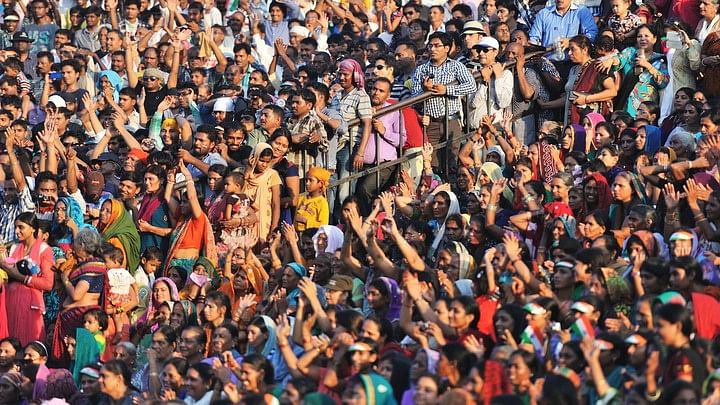
Representative image of a crowd of Indian population.
Credit: iStock Photo
The estimates made by the UN’s World Population Prospects report are useful for all countries in planning their future. The demographic destinies are different, and each country will have to plan for its unique situation. The report says world population will continue to increase till the early 2080s when it will cross 10 billion from today’s 8 billion, and then start declining. Just as the rise was uneven, the decline also will vary between regions and countries. Much of the increase in the second half of the century will take place in Africa, especially in its underdeveloped sub-Saharan region. Serious economic, social and political consequences are in store in the world’s poorest region in the wake of the high population growth.
India’s population is expected to peak at 1.7 billion in the early 2060s and decline subsequently by 12%. By the end of the century, India is projected to have around 1.5 billion people, remaining the most populous country in the world. China’s population will decline to 633 million by then. Pakistan will be the third most populous country with 399 million people. India’s population, according to the report, will start declining in 2062, about two decades before the world population peaks. These figures are important because they show the challenges and responsibilities, as also the opportunities, before the country. A decade before the overall population starts declining, the working-age population will stop increasing at a faster rate than the general population. This means that there will be more children and elderly people dependent on a shrinking working age population. Per capita income will start falling and per capita spending will rise. That shows India has only three decades to grow so that it can effectively support its population. If we fail to do that, the demographic dividend will become a serious demographic liability.
The number of people above the age of 60 is expected to double to 346 million by 2050. The elderly population will keep growing after that and this underlines the need to expand economic and social security for them. This will have to be done at individual, collective and institutional levels. The report says that all countries with growing populations “must invest in education, health and infrastructure and implement reforms to create jobs and improve efficiency to capitalise on the demographic opportunity’’. Failure to do that will have serious consequences, especially for countries like India which have very large populations. It is unfortunate that there is little realisation of this among governments and political parties.